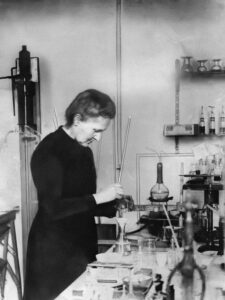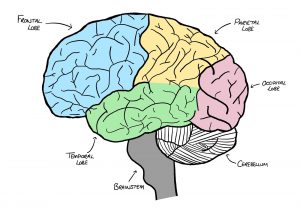The Scientist’s Mindset – Curiosity And Persistence
By Mia
So, what exactly is a mindset? A mindset refers to a particular way of thinking—a set of beliefs, attitudes, and perspectives that shape how we interpret and respond to the world around us.
Many people around us have a closed mindset, while others have an open mindset. Having a closed mindset means you think you already know all the answers and avoid new perspectives, which prevents you from reaching your full potential. On the other hand, having an open mindset means you’re open to new ideas and are willing to consider other people’s perspectives and try new experiences. This makes you ready to take on any challenge you may face, even if this means failing a few times. Open-mindedness involves being receptive to a wide variety of ideas, arguments, and information.

Now that you know more about open and closed mindsets, which one do you think is necessary to become a scientist?
If you said an open mindset, then you are correct! A scientist with an open mind is free to embrace the flow of creative insights. Their thinking process approaches problems in unconventional ways. This openness enables scientists to make breakthroughs and uncover new possibilities. Remember that having an open mindset is not only needed in science but also in everyday life. It allows you to adapt and change to your surroundings, solve problems creatively, learn from experiences, build stronger relationships, and stay resilient in the face of challenges.
In this blog, we will explore why it is essential to have an open mindset and how curiosity and persistence are core aspects of a scientist. I will talk you through some examples of famous people who have flourished due to their mindset, as well as those who have been inhibited by it.
But what exactly do we mean by curiosity in this case?
Curiosity is the driving force behind discovery. It is about asking questions, exploring innovative ideas, and challenging what is known. Curiosity is what has revolutionized our understanding and brought us to where we are today.
The greatest scientists started off as curious kids eager to understand the principles of objects, asking questions like, “How does a clock work?” or “Why does a spoon look different from a fork?”. These simple questions sparked their minds to try to understand how everything works. What started as basic questions led to the discovery of millions of fascinating things like DNA, gravity, electricity, and many more.

Have you heard of Marie Curie, the Polish and naturalized French physicist and chemist who conducted pioneering research on radioactivity?
Marie Curie discovered radiation after hearing about a scientist named Henri Becquerel, who found that uranium emitted special rays. She was curious, persistent, and wanted to learn more about them!
What do you know about persistence?
Persistence is the act of continuing in an opinion or course of action despite difficulty or opposition. Scientists need to remain persistent to keep adapting to changing circumstances. Persistence is crucial in science. It is about staying dedicated to finding answers when the road is tough, or the results are elusive.
Thomas Edison failed thousands of times before successfully inventing the light bulb, showing the power of persistence.

So, we have spoken about all the wonderful advantages of having an open mindset, but you also need to understand the disadvantages of having a closed mindset. A closed mindset resists change, avoids new ideas, and sticks rigidly to established beliefs, often fearing failure.
It seems reasonable to fear failure and change, but not if you are a scientist!
Lord Kelvin, a renowned physicist, famously stated, “There is nothing new to be discovered in physics now. All that remains is more and more precise measurements.” His closed mindset limited his ability to embrace new scientific ideas like quantum theory and the theory of relativity, which emerged shortly after.
Alfred Wegener proposed the theory of continental drift in the early 20th century, but many prominent scientists of the time dismissed it because they couldn’t accept the idea of continents drifting across the ocean. This resistance delayed the acceptance of plate tectonics and progress in understanding Earth’s geological processes. Unfortunately, when Wegener died in 1930, his ideas had not yet been widely accepted; only a small minority of geologists found merit in his hypothesis, while the majority—with a closed mindset—rejected it outright.

It is important to remember that even when faced with uncertainty or the unknown, curiosity always leads to innovation and discoveries that have far-reaching consequences. An inspiring example is Rosalind Franklin. Her curiosity about the structure of DNA and her use of X-ray crystallography, although not initially credited, paved the way for the discovery of the double helix structure of DNA. The role of persistence in overcoming setbacks and embracing the process of trial and error is key to success in scientific endeavours.
Curiosity and persistence get even better when you work with others. When people come together with different ideas, they can challenge each other and offer new perspectives. In science, a lot of discoveries happen because of teamwork. For example, the DNA double helix wasn’t just about Watson and Crick—it also relied on Rosalind Franklin’s X-ray images and input from other scientists.
Working with others who push you to think differently can help you keep going, stay curious, and find new solutions. Collaboration isn’t just about sharing knowledge; it’s about creating an environment where everyone can grow and succeed together.
Marie Curie broke barriers with her curiosity. Her work on radium and polonium led to the development of cancer treatments, despite the obstacles she faced, including discrimination and health challenges. So, remember, don’t give up, keep going despite the challenges, and you will get there!

As stated, curiosity and persistence can help in personal growth, career advancement, and even everyday challenges.
By simply asking for the definition of a word, you could become the next Nobel Prize winner!
Steve Jobs, businessman, inventor, and investor, best known for co-founding the technology company Apple, was renowned for his persistence and curiosity, which led to innovations such as the iPhone. He also revolutionized the tech industry thanks to his curious and persistent mind.
Additionally, it is essential to approach work (when the time comes) with a scientific mindset: continuously questioning the status quo, seeking out new knowledge, and staying determined in the face of obstacles.

My practical tips for you
- Stay curious by asking questions
- Don’t settle for easy answers
- Embrace failure as part of the process (persistence will pay off in the long term)
- Engage in lifelong learning
- Read, explore, and learn new things
- Be open to feedback and change, whether in your career or personal life
- Surround yourself with people who challenge you and encourage growth
In conclusion, I want to stress the importance of a scientific mindset and how it applies not just to science but to anyone striving for success.
So, fellow readers, I encourage you to reflect on your mindset and how curiosity and persistence propel your personal and professional journey!



